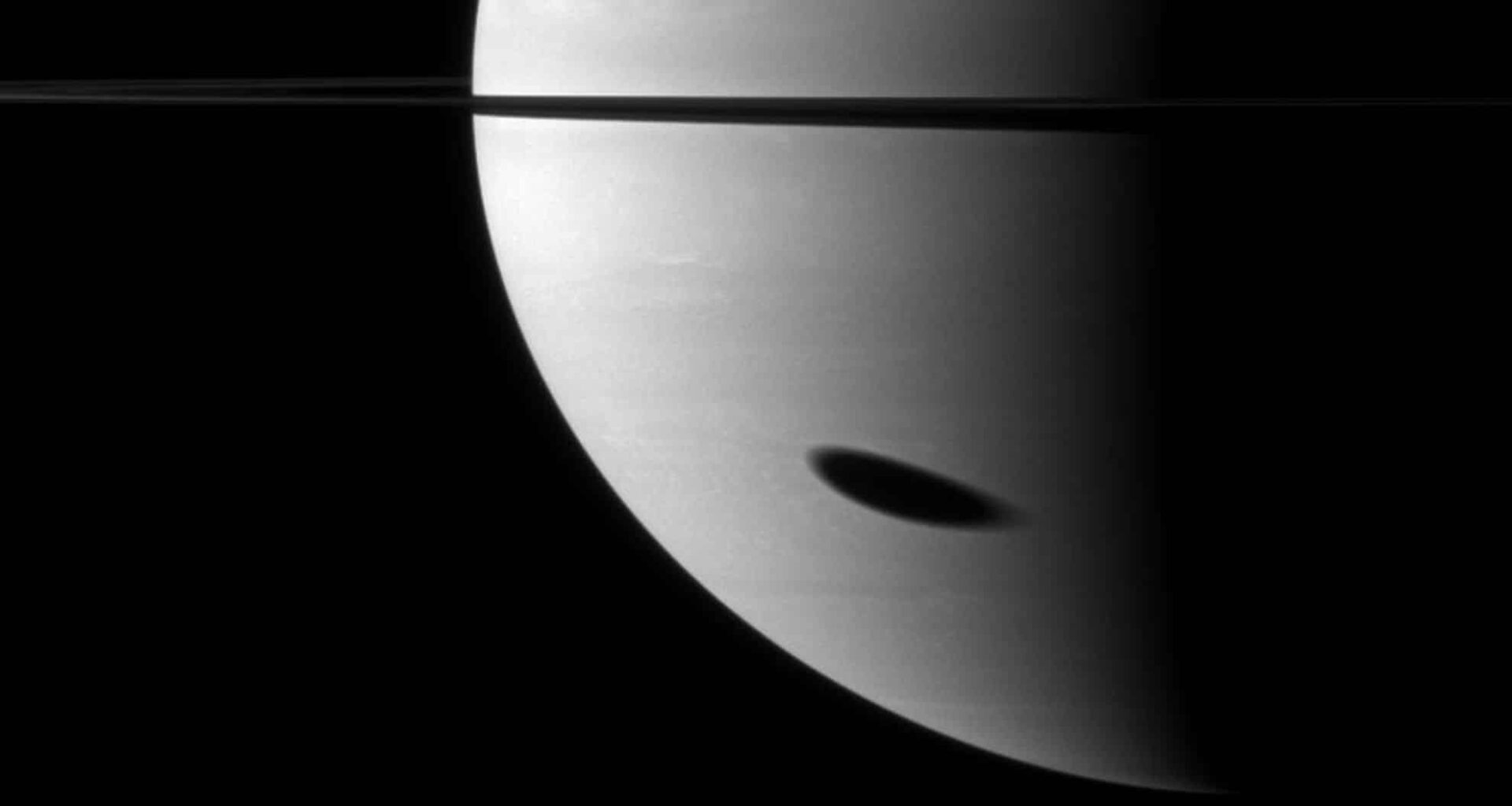A rare celestial event is about to unfold in Earth’s night skies on August 19, 2025, when Saturn and its largest moon, Titan, engage in a dramatic shadow transit—a phenomenon visible through amateur telescopes across much of North America. As Sky & Telescope recently noted, this is part of a limited “Titan shadow transit season,” which only happens about once every 15 Earth years.
Titan’s Shadow Crosses Saturn: A Celestial Dance
Shadow transits on Saturn occur when one of its moons passes directly in front of the planet and casts a distinct shadow onto its cloud tops. Titan, Saturn’s largest moon, is particularly captivating during these events due to its sheer size and thick, haze-filled atmosphere. The shadow it casts appears as a round, well-defined dark spot drifting slowly across Saturn’s visible surface.
These transits can only happen during “transit seasons”—brief windows when Earth’s perspective aligns with Saturn’s equatorial plane. The current transit season began in July 2025 and will last into early 2026, but not all transits will be visible from Earth. August 19 offers one of the clearest opportunities to observe Titan’s shadow in action.

Credit: Christopher Go
When and Where to Look on August 19
Observers in North America will be in the ideal position to witness this transit. Saturn rises in the southeast shortly after sunset and reaches its highest point around midnight local time. The shadow transit of Titan is expected to begin at approximately 10:45 p.m. EDT and continue for nearly four hours.
You won’t need professional equipment to enjoy the show. A telescope with a 4-inch aperture or larger will suffice, though better results can be achieved with higher magnification (100x or above). A stable mount, clear skies, and minimal light pollution will greatly enhance visibility.
Jupiter and the Moon Add to the Visual Spectacle
This rare Titan transit doesn’t come alone. On the same night, Jupiter and the waxing gibbous Moon will also be prominent in the sky. Jupiter, the brightest object in the eastern sky after the Moon, offers its own treat: its four major moons—Io, Europa, Ganymede, and Callisto—will be arranged in a visually pleasing configuration easily seen through small telescopes.
The Moon, approaching full phase, will cast a moderate glow but remain high enough above the horizon to allow surface feature observations during early evening hours. Together, these three celestial bodies will form a wide, graceful arc stretching across the southern half of the sky.
Why Titan’s Shadow Matters for Astronomers
While shadow transits are fascinating to watch, they also serve a deeper purpose. For planetary scientists, observing Titan’s shadow provides key insights into orbital dynamics, atmospheric behavior, and the subtle ways in which moons interact with their host planets.
Titan is of particular interest because of its thick atmosphere, methane lakes, and potential subsurface ocean—features that make it a target for future exploration. NASA’s Dragonfly mission, set to arrive in the mid-2030s, aims to deploy a rotorcraft to explore Titan’s terrain. Precise tracking of events like shadow transits helps refine navigation and mission planning.
Equipment Tips for Viewing the Shadow Event
Even modest equipment can deliver a meaningful experience. Here are a few suggestions to maximize the view:
- Use a telescope with at least 4 inches of aperture
- Set up at least 30 minutes in advance to allow your equipment to thermally stabilize
- Choose a location with minimal light pollution and a clear view of the southeastern sky
- A planetary filter may help increase contrast on Saturn’s surface
- If you own a motorized tracking mount, it will make it easier to follow Saturn’s slow movement
For more advanced observers, this is also a chance to capture images of the transit. Long-exposure astrophotography or frame stacking can help you document Titan’s shadow in detail.
More Transits Coming — but Not for Long
Although the August 19 transit is one of the best this year, several more shadow events will follow during the current season. Still, Titan’s orbit and Earth’s line of sight are slowly shifting, which means these events will become harder to catch with each passing month.
Once the season ends in mid-2026, Titan shadow transits won’t return for nearly 15 years. This makes the coming months, especially August 19, a rare and exciting opportunity for anyone interested in planetary observation.
